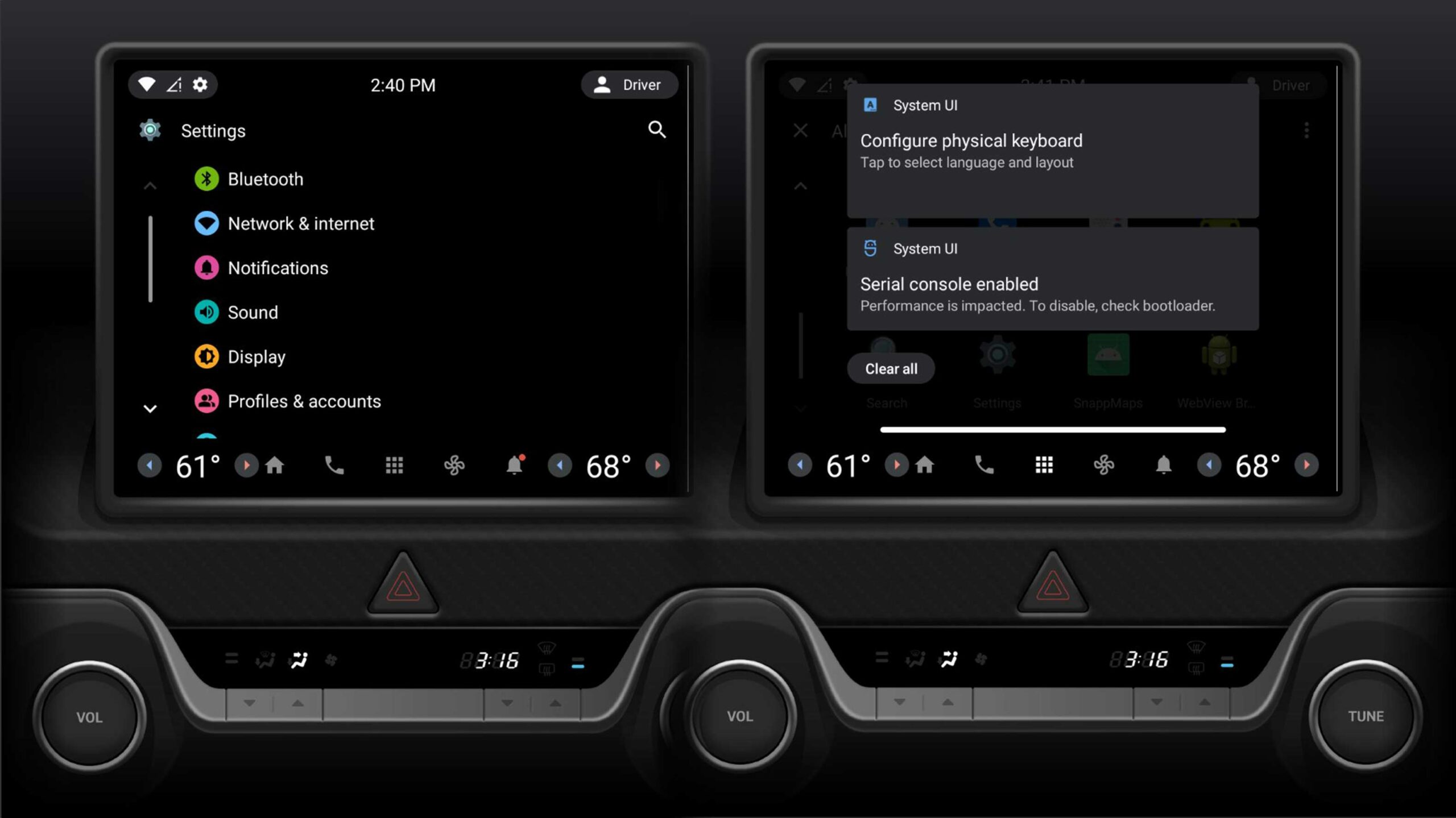Old smartphones and tablets can serve a lot of purposes. You can trade them in exchange for credits, use them as a remote control, or even turn them into smart home hubs. On the other hand, you can do something more technical with it, like Esper’s senior technical editor Mishaal Rahman.
Rahman was able to turn an old Galaxy Tab S5e into an Android Automotive head unit with support for Android Auto.
I've turned a Galaxy Tab S5e into an Android Automotive head unit with Android Auto support👀 https://t.co/AZN9Xm5qX7 pic.twitter.com/SjKhMMlDBm
— Mishaal Rahman (@MishaalRahman) September 13, 2022
As displayed in a Twitter thread, Rahmaan’s creation runs on the Vanilla version of the Android Automotive (the most basic version of the OS), and can be connected to a phone via USB for Android Auto support. According to Rahmaan, everything works as intended, for the most part. Google Maps intermittently crashed, while location access seems to be wonky too. Rahmaan also isn’t able to complete the profile setup, while the Android Auto Receiver is only working in wired mode.
The weather widget on the home screen seems to be blank, which Rahmaan says is due to it being just a placeholder. And behind the UI is a watermark that reads “Pre-production hardware not for sale,” which, according to Rahmaan, is from Android Auto on the connected phone, not the tablet.
Rahmaan says he’s planning to bring Android Automotive to more devices, and will likely share a generic system image (GSI) that others can use on their old devices to double as a head unit. He also stated that he will share his journey with converting the old Tab S5e into an Android Automotive device in a blog post over on Esper soon, so keep an eye out.
Image credit: @MishaalRahman
Source: @MishaalRahman Via: AndroidPolice





